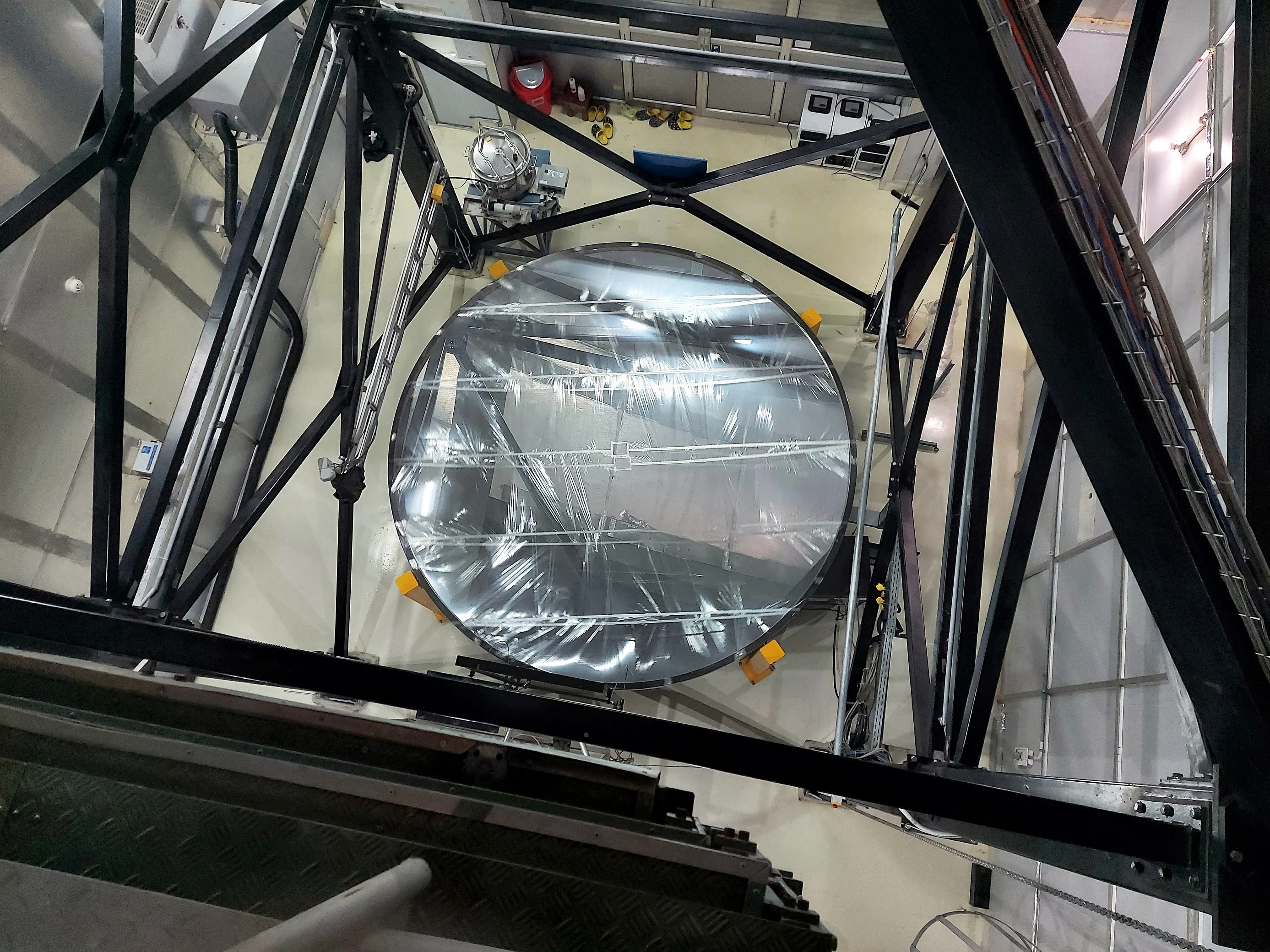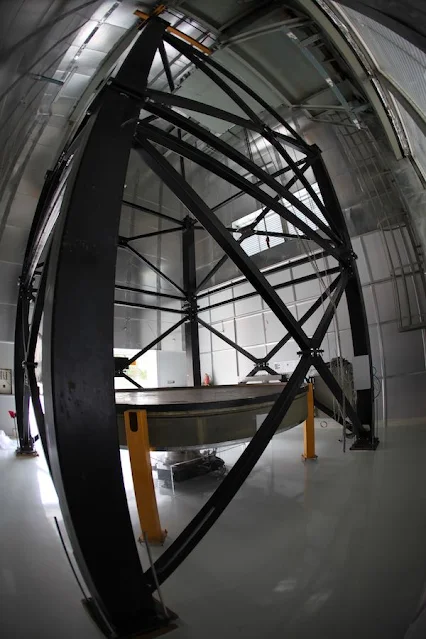 |
| Top view of the ILMT showing the liquid mercury mirror covered by a thin mylar film. |
A new telescope facility — International Liquid Mirror Telescope (ILMT) — has been formally launched in Uttarakhand at campus of Aryabhatta Research Institute of Observational Sciences (ARIES) to keep a watch on the overhead sky to identify transient or variable objects such as supernovae, gravitational lenses, space debris, and asteroids.
This new telescope is first liquid mirror telescope in India and the largest in Asia. It will help in surveying the sky making it possible to observe several galaxies and other astronomical sources just by staring at the strip of sky that passes overhead.
Built by astronomers from India, Belgium and Canada, the novel instrument employs a 4-meter-diameter rotating mirror made up of a thin film of liquid mercury to collect and focus light.
Prof. Dipankar Banerjee, Director, ARIES, said, "ILMT is the first liquid-mirror telescope designed exclusively for astronomical observations installed at the Devasthal Observatory of ARIES. The ILMT and the Devasthal Optical Telescope (DOT). Both are the largest aperture telescopes available in the country."
A 4Kx4K CCD camera manufactured by 'Spectral Instruments' and which can operate over the 4000 to 11000 Å spectral range (SDSS filters g', r', i' are available), will be positioned at the prime focus of the ILMT at about 8m above the mirror. The mirror being parabolic in shape requires an optical corrector to get a flat focal surface of about 27 arcminute in diameter. All these elements are mechanically coupled by an external structure and a spider.
 |
Dr. Kuntal Misra, Project Investigator of ILMT at ARIES, said, "The wealth of data generated with the ILMT survey will be exemplary. In the future, several young researchers will be working on different science programs utilizing the ILMT data. When regular science operations begin later this year, the ILMT will produce about 10 GB of data every night, which will be quickly analyzed to reveal variable and transient stellar sources,” said Dr. Brajesh Kumar, ILMT Project Scientist at ARIES. The 3.6 metre DOT, with the availability of sophisticated back-end instruments, will allow rapid follow-up observations of the newly-detected transient sources with the adjacent ILMT."
The data collected from ILMT will be ideally suited to perform a deep photometric and astrometric variability survey over a period of typically 5 years,” notes Project Director Prof. Jean Surdej (University of Liège, Belgium and University of Poznan, Poland).
The ILMT achieved first light in the 2nd week of May 2022. Using the first light observations through the g, r and i Sloan filters, a colour composite image (shown below) of a small portion of the sky was prepared.
The data collected from ILMT will be ideally suited to perform a deep photometric and astrometric variability survey over a period of typically 5 years,” notes Project Director Prof. Jean Surdej (University of Liège, Belgium and University of Poznan, Poland).
The ILMT achieved first light in the 2nd week of May 2022. Using the first light observations through the g, r and i Sloan filters, a colour composite image (shown below) of a small portion of the sky was prepared.
To highlight the features of galaxies and other stellar objects, the green colour has been slightly enhanced in the image. NGC 4274 Galaxy can be seen in the top right corner.
 |
| Colour composite image obtained from first light observations of ILMT. |
The 4m International Liquid Mirror Telescope (ILMT) project results from a collaboration between Aryabhatta Research Institute of Observational Sciences (ARIES, India), the Institute of Astrophysics and Geophysics (Liege University), the Canadian Astronomical Institutes, University of Montreal, University of Toronto, York University, University of British Columbia and Victoria University.















 IndianWeb2.com is an independent digital media platform for business, entrepreneurship, science, technology, startups, gadgets and climate change news & reviews.
IndianWeb2.com is an independent digital media platform for business, entrepreneurship, science, technology, startups, gadgets and climate change news & reviews.



